World Integrated Medicine Master TU Youyou (屠呦呦)—The Award Winner of Nobel Prize in Physiology or Medicine
ZOU Jian-hua (邹建华), LIU Yang (刘 洋), LIU Chun-jing (刘春静), Shelley OCHS (欧阳珊婷),WANG Xiao-kai (王晓凯), HONG Tao (洪 涛)
1. Translation Center of World Federation of Chinese Medicine Societies, Beijing 100101, China 2. Heilongjiang University of Chinese Medicine, Haerbin 150040, China 3. Beijing University of Chinese Medicine, Beijing 100029, China 4. Beijing United Family Hospital, Beijing 100083, China
PRELUDE
A handful of Qinghao (Artemisiae Annuae Herba) in 2 liters of water, immersed for more than an one thousand years, blossomed for you. One mission made up of thousands of experiments. Extracted the essence of ancient culture, yet deeply implanted in the contemporary world, helped mankind to survive a catastrophe.
青蒿一握,水二升。浸渍了千多年,直到你出现。
为了一个使命,执着于千百次实验。
萃取出古老文化的精华,深深植入当代世界,帮人类渡过一劫。
The Deer Coos Youyou, Eats Artemisia of the Wild
呦呦鹿鸣 食野之芩
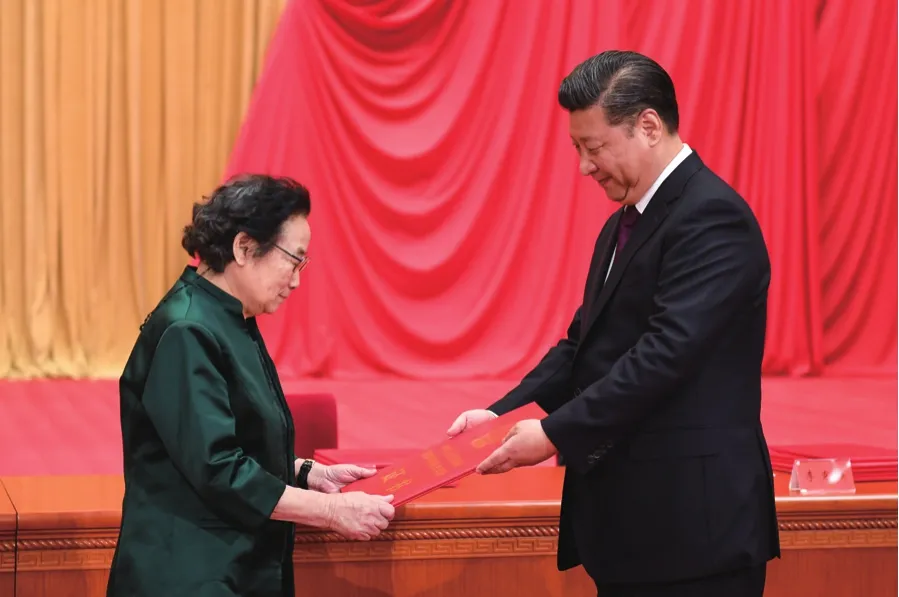
President Xi Jinping awarded Tu Youyou the 2016 National Science and Technology Award, January 2017
She has been focusing on one thing and working on it silently for decades. She experimented thousands of times to reach one goal. She, at the age of 85, stood on the podium in the Stockholm Concert Hall, telling the world about the gift of Chinese medicine to the world. She is Tu Youyou, the winner of the "Reform Pioneer", the "Medal of the Republic", the "Highest National Science and Technology Award", and the "Nobel Prize in Physiology or Medicine". Her discovery of Qinghaosu (artemisinin)saved millions of lives in the world. On the dif ficult road of antimalarial drug research and development, which she undertook with a true heartfelt sense of responsibility, she made Qinghao (Artemisiae Annuae Herba) a world-famous "Amazing Chinese Herb"[1].
INTRODUCTION OF TU YOUYOU
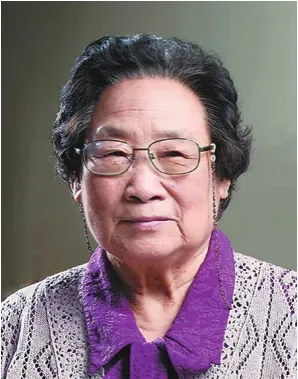
Tu Youyou was born in December 1930 in Ningbo,Zhejiang. After graduating from the Department of Pharmacy of Beijing Medical College in 1955,she was assigned to the Institute of Chinese Materia Medica of the China Academy of Chinese Medical Sciences(CACMS). She is a tenured researcher and chief researcher of CACMS, and Director of Artemisinin Research Center at CACMS.
Tu Youyou's primary scientific contribution is the discovery of artemisinin. She got a key inspiration from ancient Chinese medicine books,then changed the traditional extraction process,creating a method of extracting effective parts of Qinghao against malaria at low temperatures.This was a key breakthrough in the discovery of artemisinin; it was the first extraction to obtain a 100% inhibition rate against malaria parasites. The anti-malarial effective components of Qinghao were reported at the national "523" conference, which then drove national antimalarial research on Qinghao extract. She and her team were the first to start antimalarial studies of Qinghao extract. The effective single ingredient "artemisinin" was isolated from the effective part, and the first clinical trial of "Ether extraction, neutral part, low temperature drying"and artemisinin monomer was carried out, which con firmed its clinical effectiveness in the treatment of malaria. The chemical structure of artemisinin lends itself to the development of its derivatives.She and her team developed artemisinin as the first new drug approved after China implemented a new drug approval method in accordance with the new national drug regulations.
Artemisinin is a new compound with a completely different chemical structure and mechanism of action compared to the known antimalarial drugs. This discovery rewrote the history of antimalarial ingredients with only N-heterocyclic alkaloids and marks a new direction for the development of human antimalarial drugs. Since the 1990s, the World Health Organization (WHO)has recommended artemisinin-based combination therapy (ACT) as the first choice for the treatment of malaria. It is now widely used in malaria-endemic areas around the world. In recent years, the annual purchase of ACT has reached more than 300 million people. According to WHO's 2015 World Malaria Report, as a result of effective prevention and treatment measures, including ACT, the global incidence of malaria decreased dramatically. There were 214 million cases and 738,000 deaths in 2000,while the morbidity and mortality rates dropped by 37% and 60% respectively in 2015, which had saved approximately 5.9 million children's lives.
Tu Youyou and her team have won many important domestic and foreign awards for developing artemisinin. In 1978, the "523" research group of the Institute of Chinese Materia Medica under the Ministry of Health of the Chinese Medicine Institute was commended by the National Science Conference. In 1979, the "New Antimalarial Drug Artemisinin" won the second prize of the National Invention Award. In 2011, Tu Youyou was awarded the Lasker Prize for Clinical Medicine in the United States for "discovering artemisinin, a drug for treating malaria, saving millions of lives globally,especially in developing countries"; in October 2015, Tu You You also won the Nobel Prize in Physiology or Medicine for "taking inspiration from classical Chinese medicine literature, pioneering the discovery of artemisinin, and creating a new method for malaria treatment".
In recent years, Tu Youyou's research team has made new progress in expanding research on the ef ficacy of artemisinin[2].
BORN OF TU YOUYOU
At dawn on December 30th, 1930, a crying little baby was greeted in a courtyard at No. 508 Kaiming Street, Ningbo City. She was the daughter that the family had been looking forward to after their three sons. Listening to the child's cry, her father,Tu Liangui, casually recited the famous verse "The Deer CoosYouyou, Eat Artemisia of the Wild." from the "Book of Songs (Shi Jing)". Since then, there has been a woman called Tu Youyou in the world[3].
Tu Youyou's father attached great importance to education, but Tu Youyou was born into a rather turbulent era. Due to the corruption and incompetence of the National Government, the invasion of Japan, and the fall of Ningbo, the family suffered catastrophes, and life became very dif ficult,but her father's resolution in educating his children remained.
GETTING CONNECTED WITH MEDICINE
In 1946, 16-year-old Tu Youyou experienced a personal disaster-she got infected with tuberculosis.One can imagine the test of character this must have been for a still immature little girl. Fortunately,after more than 2 years of treatment, Tu Youyou recovered and was able to continue her studies.This experience of suffering from tuberculosis was the beginning of Tu Youyou's interest in medicine."The role of medicine is amazing. I thought at the time that if I learned medicine, I could not only keep help myself healthy, but also save more people."The starting point of a lifetime of pharmaceutical studies came from this simple desire to "treating oneself and save others."
In 1951, Tu Youyou was admitted to Peking University and studied at the Department of Pharmacy of Peking University School of Medicine, where she majored in pharmacology. During her 4 years in university, Tu Youyou studied hard and achieved excellent results. After graduating from the university,Tu Youyou was assigned to work in the Institute of Chinese Meteria Medica of the CACMS of the Ministry of Health. The Institute was still at the start-up stage when Tu Youyou joined the CACMS. The conditions were dif ficult and the equipment was extremely rare.The laboratory did not even have basic ventilation facilities. Tu Youyou, who often dealt with various chemical solutions, soon suffered physical damage and even once contracted toxic hepatitis. In the national anti-schistosomiasis outbreak, her research results on the efficacy of Banbianlian (Lobeliae Chinensis Herba) and Yinchaihu (Stellariae Radix)were successively included in the "Chinese Medicine Journal". Her formidable scientific research ability slowly revealed itself. During the three years from 1959 to 1962, she participated full-time in the third national campaign, which was for Western medicine specialists to study Chinese medicine at the Ministry of Health. She systematically learned Chinese medicine knowledge, extensively explored medicinal material companies, studied identification and processing techniques of Chinese herbal medicines from experts, and participated in experience sharing of herbal processing in Beijing. As a result, she gained a deep understanding of the authenticity of species andDaodimedicinal materials, as well as the processing technology, which laid a solid foundation for her subsequent research on Chinese herbal medicines.
MEET QINGHAO
Historical Background
Malaria, which is known as "bad air" in Italian,"Miasma" in classical Chinese medicines, and"Dabaizi" in Chinese colloquial language, is a common tropical epidemic disease. As early as 3000 years ago, during the Yin and Shang era in China, malaria was a widespread problem. Once it appeared, there were countless fatalities.

Tu Youyou (front right) and her mentor,Associate Professor Lou Zhicen, 1950s
Malaria is a parasitic disease caused by human plasmodium infection. It is mainly transmitted to humans by female mosquitoes of the genus Anopheles. Usually, the malaria-causing Plasmodium parasite first seeks refuge inside the liver and reproduces, then escapes into the blood stream,invading red blood cells, developing, reproducing and triggering the devastating disease. Clinically, it is characterized by recurrent intermittent shivering,high fever, and decreased body temperature after sweating. Repeated attacks of malaria can lead to the destruction of a large number of red blood cells, causing patients to have symptoms such as splenomegaly and varying degrees of anemia.
In the 1960s, on the Vietnam battlefield,malaria appeared quietly, and then fermented and spread rapidly through the hotbed of war. Due to this emergency situation, Vietnam Government asked China for help. Under the instructions of Chairman Mao and Premier Zhou, the "523" project to fight malaria was immediately launched while waiting for Tu Youyou's arrival.
Initial Exploration
On January 21st, 1969, Director Bai Bingqiu,Deputy Director Zhang Jianfang, and Tian Xin of the National "523" Office came to the Institute of Chinese Materia Medica, CACMS. They introduced the basic situation and research progress of the"523" project, and expressed their hope that the Institute of Chinese Materia Medica, CACMS would also participate. The CACMS instructed the Institute of Chinese Materia Medica to set up a research team, with Tu Youyou as the research team leader responsible for the overall work. From that point on, Tu Youyou began the arduous exploration of new anti-malarial drugs development from Chinese materia medica[4].
Faced with the severe situation of the global malaria epidemic that was difficult to control, she was assigned 2 tasks at the time: one was to identify new drugs; the other was to continue the research on the traditional Chinese medicinal herb febrifugine. They wanted to find ways to remove the toxicity of febrifugine, and resolve the problem of vomiting after taking it. After accepting this heavy responsibility, Tu Youyou, who was only 39 years old at that time, felt excited,but she was also deeply aware of the heavy responsibility and arduous task. She made up her mind to meet the task with all her strength. Although her predecessors had screened single herbs and compound prescriptions from the literary records and clinical practice, Tu Youyou firmly believed that Chinese medicine has a long traditional history that must contain essential information, and efforts should be made to discover it. Relying on her familiarity with both Chinese and Western medicine knowledge and solid basic skills, she decided to start with researching Materia Medica, literature, extensively collecting and sorting out medical records from past dynasties,checking actual prescriptions written for malaria patients, and consulting old Chinese medicine experts. In just 3 months, she collected more than 2000 prescriptions including oral administration,external use, plant, animal, and mineral medicines.On this basis, she selected and edited a monograph called "Kang Nue Fang Yao Ji Anthology of (Antimalarial Formula)" containing 640 prescriptions,. It was mimeographed into a book under the name of the Revolutionary Committee of the CACMS, and was sent to the National "523" Office in April 1969.She recommended that it be forwarded to relevant institutions under research in this area for their reference.
In July 1969, they conducted field work in the Hainan malaria area as part of the "523" mission.The National "523" Office required the Institute of Chinese Materia Medica, CACMS to take the pepper and capsicum plus alum, which had a high inhibition rate against mouse malaria in the screening samples in the first half of the year, to Hainan for clinical observation. The Institute of Chinese Materia Medica sent Tu Youyou, Lang Linfu, and Yu Yagang to Hainan. The clinical verification found that although various prepared samples of pepper and capsicum plus alum had an inhibitory rate of more than 80% against mouse malaria, they could only improve some symptoms for malaria patients, but failed to turn the patients' malaria parasite tests to negative.
From February to September 1970, more than 120 pepper samples of various extracts and mixtures were sent to "236" for testing. Through a process of potency determination, it was found that pepper failed to increase potency after separation and extraction; adjusting the ratio of ingredients could increase potency, but it was far inferior to chloroquine (the most commen treatment for Malaria at the time). In September of the same year, Tu Youyou and Yu Yagang discussed expanding the scope of screening. However, after the start of the expanded screening, only more 30 more screening samples were made,
Including an ethanol extract of Qinghao, which had a malaria parasite inhibition rate of 68%. Due to the arduous nature of the work of "236" itself,in the autumn of 1970, they concluded that it was dif ficult to undertake the antimalarial activity test in cooperation with the Institute of Chinese Materia Medica. Moreover, the Institute of Chinese Materia Medica didn't have the equipment and expertise for antimalarial activity detection. Tu Youyou's research team's antimalarial drug screening was discontinued.
Discovering Artemisinin
From May 22nd to June 1st, 1971, the National Leading Group for Malaria Control and Research held a symposium on malaria control and research in Guangzhou. After the Guangzhou meeting, it was determined that the CACMS would continue to be responsible for some of the research on preventing and treating malaria with Chinese medicine. The leaders of CACMS attached great importance to this. At the beginning of July, relevant personnel were recruited from the whole institute to form a malaria prevention and control research team with integrated Chinese and Western medicine, basic clinical integration,and acupuncture and herbal medicine. The drug screening work team consisted of four people,Tu Youyou was responsible for the overall work,Lang Linfu was responsible for the establishment of mouse malaria animal models, screening, and the evaluation of drug efficacy. As a result, after the adjustment and strengthening of the Chinese herbal medicine anti-malarial research team of the CACMS, the project restarted.
From July 16th, 1971 to early September 1971,they screened more than 200 samples of water and alcohol extracts of more than 100 different traditional Chinese medicinal substances, working non-stop.They looked forward to gains, but the results were disappointing. Don't bow your head in front of dif ficulties was their motto. A spirit of perseverance inspired Tu Youyou and her comrades on the research team. Calmly setting her sight on the goal,she conducted a careful analysis of the previous research, and revisited the historical literature of several relevant drugs. In the process of studying the literature repeatedly, the description of "Soaking a handful of Qinghao with a liter of water, squeezing the juice, and taking it all" in Ge Hong's "Zhou Hou Bei Ji Fang" (Emergeny Prescriptions to Keep up Your Sleeve) (see photo below) gave Tu Youyou a new inspiration. Later experiments proved that only the leaves of Qinghao contain the effective antimalarial ingredient artemisinin, but the hard stems, which account for a large proportion, are artemisinin-free. Tu Youyou finally found the key to open the door.
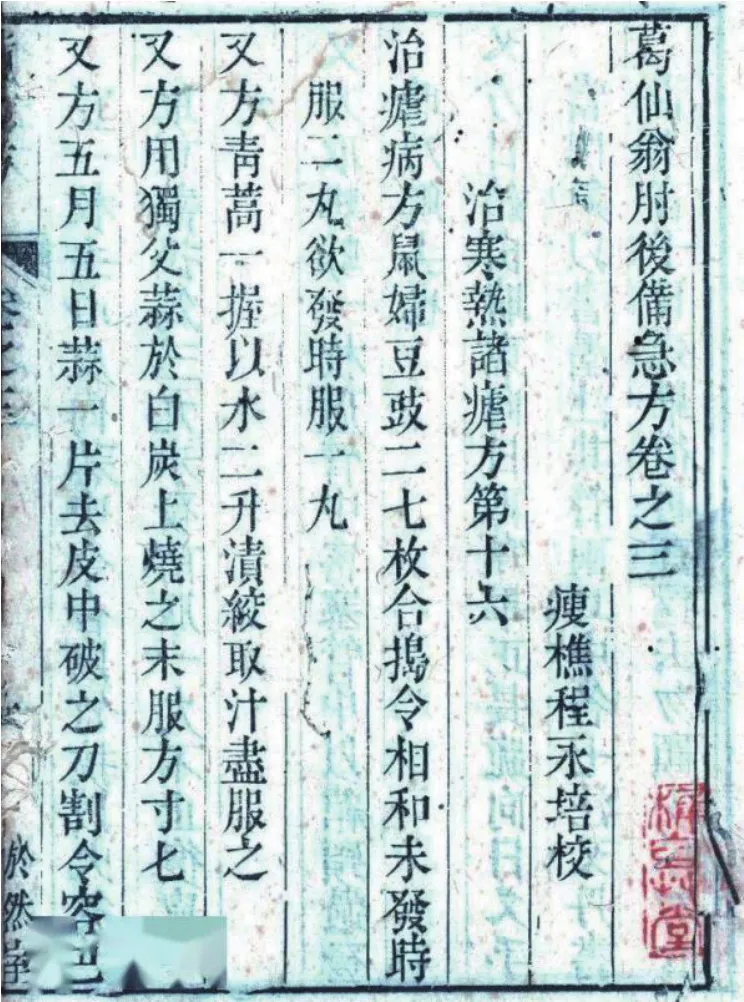
Ge Hong, an ancient Chinese medical scientist, on the extraction method of Artemisia annua for treating malaria
After careful thinking, the research team set into motion a new program, working day and night to screen and research key drugs that had been screened in the past and dozens of newly selected drugs that they starting exploring from September 1971. The hard work finally paid off on October 4th, 1971, after repeated trials and experiments,and the ether neutral extract numbered No. 191 (for confidentiality, the research team used numbers)showed exciting results. The inhibition rate of the malaria parasite reached 100%! After this breakthrough, Tu Youyou and her team worked to continuously improve the extraction, re fine protocols,and prepare samples. From December 13th to January 1972, the same results were obtained on the monkey malaria model. It was con firmed that the ether neutral extract was the active component of Qinghao, which was a key step in the discovery of artemisinin.
依托省级“新能源发电的电力系统综合自动化实训基地”和“西门子工业自动化技术实验室”,满足了智能仪表研发和仪表应用能力培养的实训需求,保证顺利开展后续专业课程的实训环节,包括智能仪表实训和PLC技术实训。
After discovering the active neutral extract of artemisinin, with the strong support and coordination of the leaders of the CACMS and the Institute of Chinese Meteria Medica, Tu Youyou organized the preparation of a large amount of neutral extract of artemisinin for clinical verification. She guided the research team to carry out the separation and extraction of the effective ingredients in the the neutral extract of artemisinin.
The separation and extraction of artemisinin from the ether neutral extract of artemisinin was such an unprecedented exploratory work that the team members worked overtime until late almost every day. Due to exposure to a large number of chemical reagents every day, poor ventilation conditions, they suffered from dizziness, swelling, nose bleeding,skin allergies and other reactions one after another.Recalling this challenging period, Tu Youyou's husband, Mr. Li Tingzhao, expressed how he loved dearly his wife: "At that time, she had only Qinghao in her mind. When she went home, she still reeked of organic solvents such as alcohol and ether. She also got toxic hepatitis. I am deeply concerned about her but still completely support her[3]."
From April 26thto November 8th, 1972, the research team obtained multiple granular, flake,and needle-like crystals. By identifying similarities and differences through color reaction, plate chromatography Rf value, and other methods, they integrated the separated components, and began to evaluate the efficacy of the drug on the mouse malaria. In early December, the mouse malaria experiments found that the No. II crystal obtained from November 8th was effective. Oral feeding of 50 mg/kg body weight to mice could turn the malaria parasite tests to negative. For the first time,a single compound with antimalarial activity was obtained from Qinghao (originally named "Qinghao needle crystal II", etc., later named artemisinin) and experiments confirmed its efficacy. The research team set November 8th, 1972 as the birth date of artemisinin. This was a milestone in the history of artemisinin discovery.
From the beginning of 1973 to May 1973, more than a hundred grams of pure artemisinin were obtained. In the second quarter of 1973, a series of safety tests for artemisinin were carried out. Neither large nor small doses had any signi ficant effect on the blood pressure, heart rate, heart rhythm and electrocardiogram of cats. Three batches of dogs also passed the toxicity test, with the exception of a few individual dogs with salivation, vomiting, and diarrhea. All other indicators were normal, and no obvious side effects were found. Erring on the side of caution, they formulated a detailed human trial administration plan, and from July 21st to August 10th, 1973, four scientific researchers voluntarily applied to participate in the trial administration. The results showed no obvious side effects.
After delivering the artemisinin tablets to the filed work site in Hainan, the comrades of the Chinese Medicine Institute and the doctors of the Acupuncture Institute who were already working there were responsible for clinical observation. Prior to September 22nd, 1973, 5 cases of falciparum malaria were treated with artemisinin in the foreign population. The results showed that it was effective in one case. The number of malarial parasites in the blood of 2 patients also decreased. But the drug was stopped because of its effects on the patients'heart rhythm (pre systolic), and it was determined to be ineffective in two cases. In conclusion, the effects were not ideal. The first clinical observation of artemisinin showed unfavorable results. The news was sent back to Beijing via telephone, and everyone was very surprised. A series of questions plagued the leaders of Tu Youyou's research team and the leaders of the Institute of Chinese Medicine,so everyone began to search for the reasons.
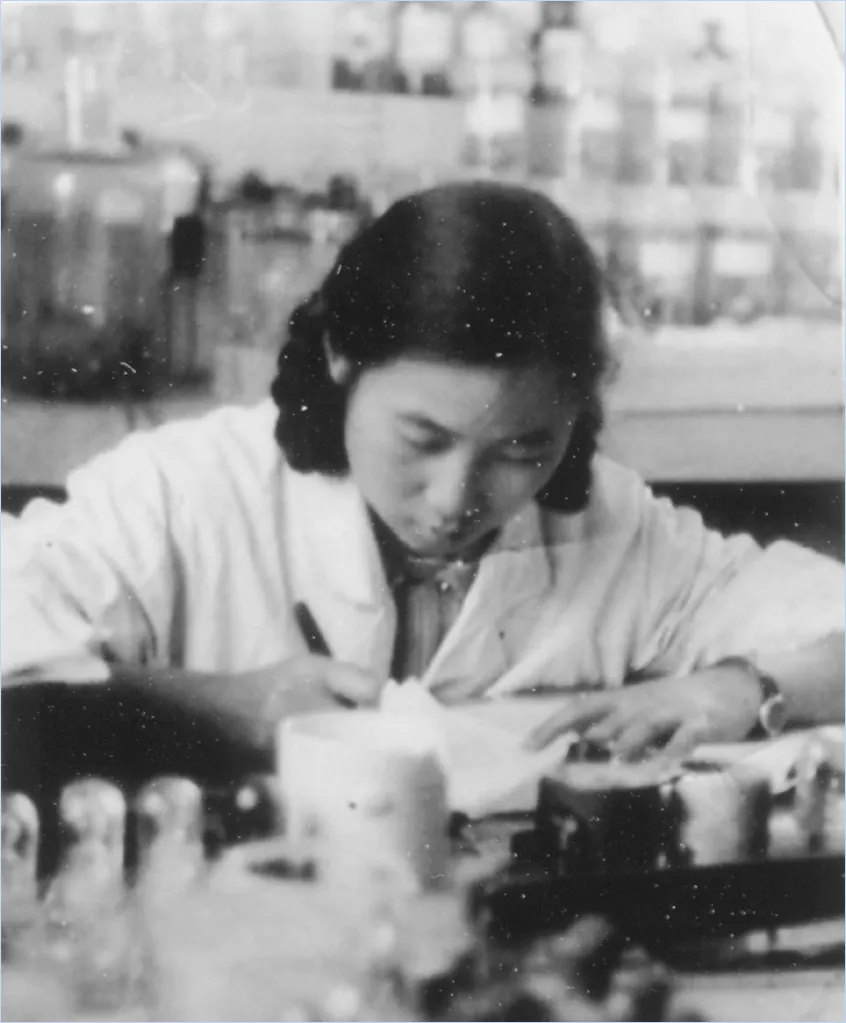
Tu Youyou began to work in the laboratory of the Institute of Chinese Materia Medica, China Academy of Chinese Medical Sciences, Ministry of Health, 1955
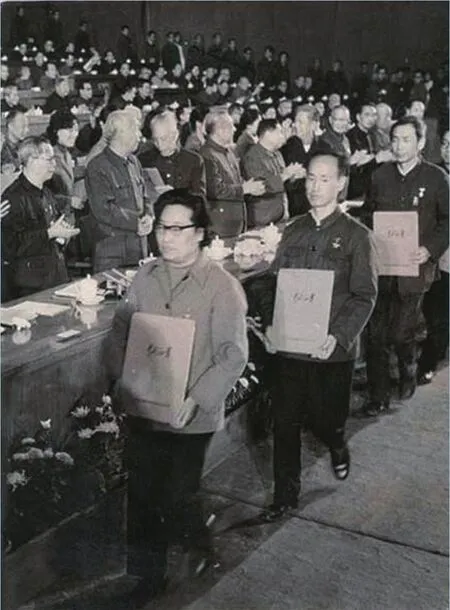
Tu Youyou participated in the National Science and Technology Awards Conference and received invention certi ficates and awards, October 1982
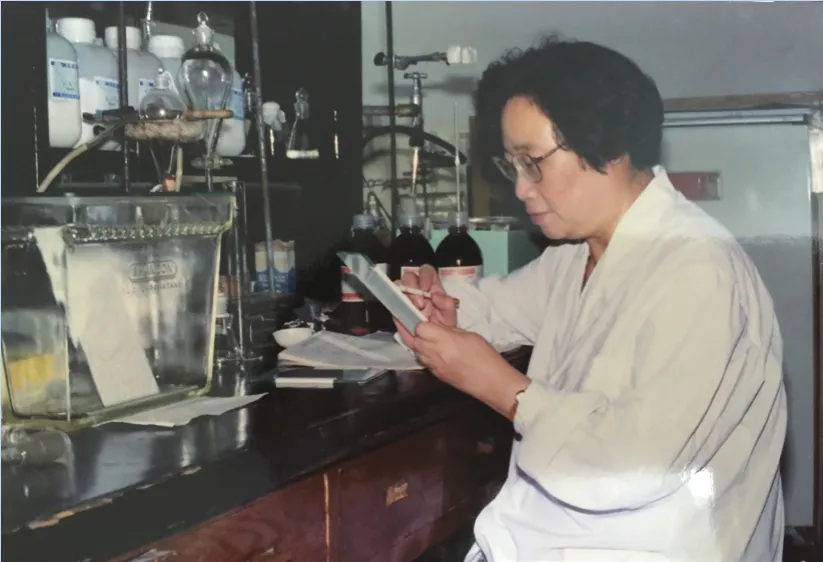
Tu Youyou was in the experiment-2, 1980s
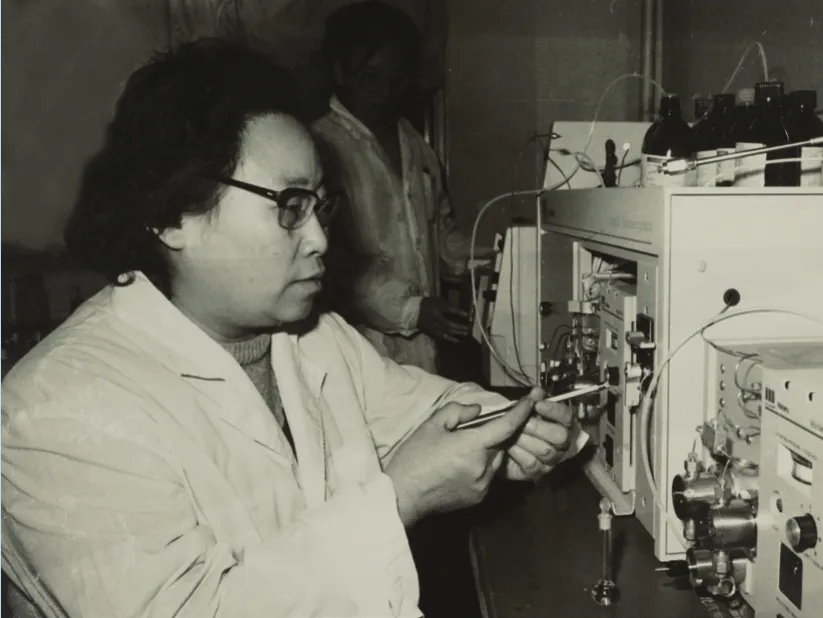
Tu Youyou was in the experiment-2, 1980s
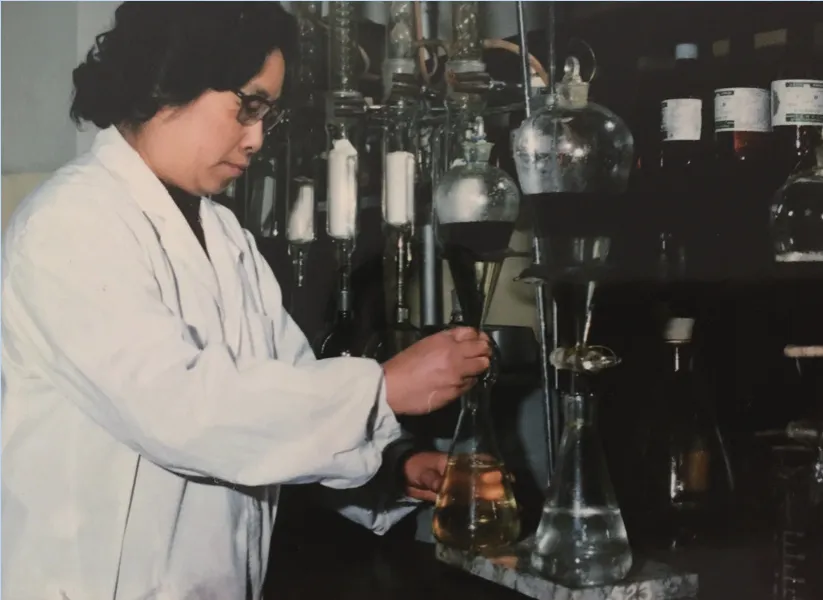
Tu Youyou was in the experiment, 1980s
When checking the tablets, it was found that there was a problem with the degree of disintegration, which affected the absorption of the drug. After discussion, they decided to take the original artemisinin powder and place it directly into capsules. The teams were under pressure to verify before the end of the on-site observation season in Hainan malaria area. The time to determine whether artemisinin had clinical effects was short.Zhang Guozhen, the deputy director of the Chinese Medicine Institute, arrived at the scene of the epidemic area on September 29th and observed 3 cases of vivax malaria among the migrant population, giving them a dosage of 3-3.5 grams.The results showed that the body temperature returned to normal within 31 hours after the drug was administered, and the blood malarial parasite test turned negative in 18.5 hours. Moreover,there were no obvious side effects. This was the first clinical test of artemisinin, indicating that the component artemisinin obtained by Tu Youyou's research team was indeed the effective antimalarial component of Qinghao.
The 3 cases treated with artemisinin capsules show that the clinical efficacy of artemisinin was consistent with the laboratory efficacy, and a new antimalarial drug had indeed been born! In April 1974, the "Malarial Control Drug (Chemical Synthesis) Research Conference" was held in Shangqiu, Henan. Chen Mei from the Science and Education Department of the Institute of Chinese Medicine attended the conference, bringing research reports on Qinghao, and reported on artemisinin and dihydroartemisinin at the meeting. This was the first time that artemisinin had been made public at an internal professional meeting.
In March 1977, the paper "A New Type of Sesquiterpene Lactone-Artemisinin" written under the name of the "Artemisinin Structure Research Collaborative Group" was published in "Science Bulletin" (1977 Issue 3). In 1978, the scientific research results appraisal meeting of the "523"project finally recognized that artemisinin had been successfully developed, and the antimalarial component of the traditional Chinese medicine Qinghao was named artemisinin (Qinghaosu)according to convention. In that year, the artemisinin antimalarial research project won the "National Major Scientific and Technological Achievement Award" at the National Science Conference. In 1979, the artemisinin research team was awarded the second prize of the National Invention Award by the National Science and Technology Commission.In 1984, the successful development of artemisinin was rated as one of the "20 major medical, scienti fic,or technological achievements since the founding of the People's Republic of China 35 years ago" by the Chinese Medical Association. In 1986, "artemisinin"obtained the first class new drug certificate (86)Health Medicine Certi ficate The word X-01.
The Advent of Dihydroartemisinin
In late September 1973, Tu Youyou conducted an experiment on artemisinin derivatives and discovered the reduced derivative dihydroartemisinin(previously called reduced artemisinin). Ni Muyun of the research team introduced the acetyl group in the reduced derivative, and the acetylated product had even higher anti-malaria effects in mice. In 1975, the research team confirmed that the peroxy group in the artemisinin structure was an antimalarial active group. Under the premise of retaining the peroxy group, the carbonyl group of the lactone ring was reduced to a hydroxyl group(ie dihydroartemisinin), which could significantly increase effectiveness. Adding a side chain to the hydroxyl group could further increase the efficacy, thus modifying the partial structure of artemisinin could change its physical and chemical properties and enhance antimalarial activity. In addition to having antimalarial activity that was stronger than artemisinin, dihydroartemisinin was also a precursor for the synthesis of artemisinin drugs. Other antimalarial drugs of the artemisinin class were based on dihydroartemisinin, such as artesunate and artemether. Therefore, the discovery of dihydroartemisinin was another important contribution of Tu Youyou and her research team.
In 1992, in response to the high cost of artemisinin and the difficulty in curing malaria, Tu Youyou organized a collaborative unit to start the development and research of a new antimalarial drugdihydroartemisinin that could be taken in tablet form.

Tu Youyou was at work, 1980s

Researcher Tu Youyou attended the Celebration of May 1st International Labor Day and the National Conference for Commending Model Workers and Advanced Workers, 1995
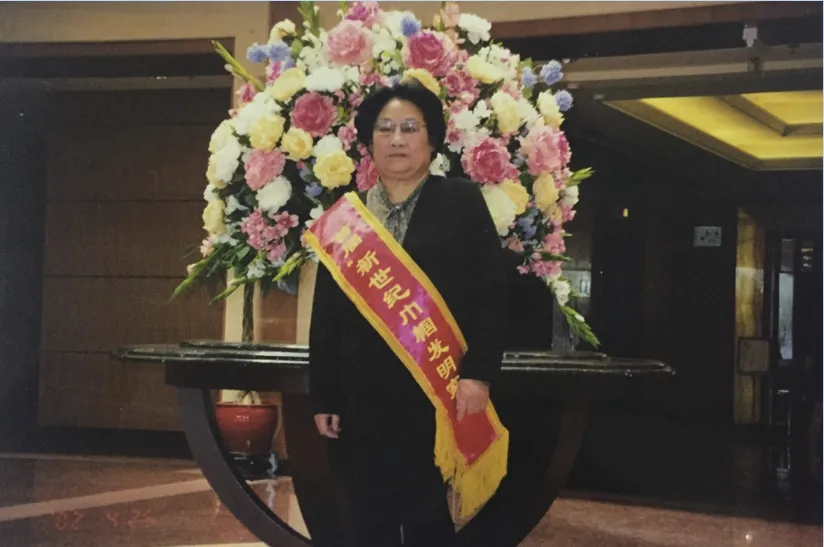
Tu Youyou was awarded the First New Century Female Inventor Award, 2002

Photo by Xinhua News Agency after Tu Youyou won the Nobel Prize in 2015

Tu Youyou worked with the technicians of Beijing No. 6 Pharmaceutical Factory, 1992

Tu Youyou guided her assistant to do experiments, 1996
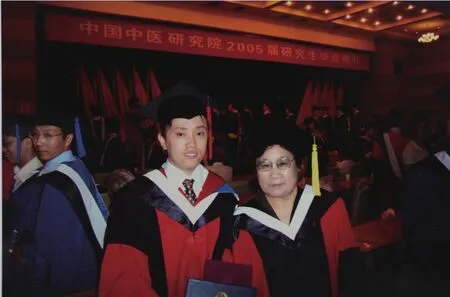
Teacher Tu and her first Ph.D. Wang Manyuan took a group photo at the 2005 graduate graduation ceremony of China Academy of Chinese Medicine,2005

Tu Youyou read the China Traditional Chinese Medicine News, August 2019
As the clinical efficacy of dihydroartemisinin was increased by 10-fold, the dosage needed was small, and the re-combustion rate was reduced to 1.95%, which further reflected the characteristics of "high ef ficiency, quick effects and low toxicity" of artemisinin drugs. The research on"dihydroartemisinin and its tablets" she chaired that year was rated as one of the top ten national scientific and technological achievements, and for this work she was hired by the CACMS as a tentured researcher. Dihydroartemisinin was produced by a Beijing company under the trade name "Ketaixin"and was widely used in the treatment of various types of malaria. For a period of time, it was a musthave gift for Chinese leaders visiting Africa, where"Ketaixin" was known as the "magic medicine",and some people even named their newborn child"Ketaixin".
New Development
Although it has been almost half a century since the discovery of artemisinin, the exact underlying mechanisms of its treatment actions on malaria are still unclear. The research team has always been unswervingly walking on the road of artemisinin research, trying to explore the deep mystery of artemisinin. In recent years, the Artemisinin Research Center has introduced many new research forces, such as researcher Wang Jigang who created the artemisinin multi-target theory. He used chemical and biological methods to study the process of how heme activates artemisinin and found that the activated artemisinin could covalently bond with more than a hundred malaria parasite proteins and alkylate them, interrupting the life cycle of the malaria parasites and thereby killing them. This heme-activated multi-target theory has been recognized by the international antimalarial community[5]. Wang Jigang said, "The significance of the research is that after clarifying the mechanism of artemisinin, it can be used to exert the greatest antimalarial power of artemisinin, so as to protect more people from the threat of malaria and bene fit humanity[6]." With funding from the National Natural Science Foundation of China, Tu Youyou's research team continues to explore the targets and related pathways of artemisinin based on the multi-target theory. This research is expected to reveal the deep-seated mechanism of artemisinin against malaria and promote more effective clinical medications. At the same time, it is also expected clarify the mechanisms of artemisinin resistance and help us develop countermeasures. Wang Jigang and Tu Youyou believe that artemisinin is still the only option for humans to cure malaria.Optimizing the medication regimen and using artemisinin well in the clinic means we may be able to control the existing "artemisinin resistance"phenomenon[7]. In addition to the antimalarial research on artemisinin, the team is also interested in the anticancer effects of artemisinin. At the same time, many domestic research institutions have also carried out research on expanding the indications of artemisinin drugs. For example,the work on artemisinin drugs in the treatment of lupus erythematosus has entered phase II clinical research. For rheumatoid arthritis, multiple sclerosis,asthma, etc., other workinstitutions are collaborating in using different animal models to study the ef ficacy and related mechanisms of artemisinin derivatives.The Artemisinin Research Center is initiating the establishment of the domestic "Artemisinin Technology Alliance" to promote continuous innovation in artemisinin research[5].
Chinese Wisdom and Tenacity
The history of artemisinin research and the development and application of it demonstrates the courage and sel fless spirit of cooperation of the national "523" team. The team includes more than 500 people from dozens of institutions including Shandong Institute of Chinese Materia Medica,Yunnan Institute of Materia Medica, Institute of Biophysics, Chinese Academy of Sciences,Shanghai Institute of Organic Chemistry, Guangzhou University of Traditional Chinese Medicine, Shanghai Institute of Materia Medica, and Academy of Military Medical Sciences. The research and development of artemisinin fully embodies the superiority of my country's socialist system and the nationwide system of concentrating power to accomplish major tasks.Under the organization of the National "523" Office,"523" colleagues across the country united and cooperated to determine the structure of artemisinin,research and develop various artemisinin derivatives,and solve the problem of the production process of artemisinin drugs. Thousands of patients with malaria were provided with clinical services. Under the national system, this patriotic team is constantly striving forward, enabling artemisinin to effectively improve the global anti-malarial situation in a relatively short period of time.
In the 1960s and 1970s, the "two bombs and one satellite" scientific research team made outstanding contributions to enhancing China's national defense capabilities and improving China's space science and technology. Their high sense of responsibility for the national mission became a model for the vast number of scientific and technological workers across the country. It should be said that the national "523" team has inherited this high sense of responsibility of the"two bombs and one satellite" team for the national mission. People praise the spirit of the national"523" research team as the "artemisinin spirit". This patriotic spirit inspires struggle and dedication, unity and cooperation, innovation and development which has led to making artemisinin combination therapy that has saved the lives of many malaria patients[8].
EXPERT OF WHOLE WORLD'S ADMIRATION
In October 1981, the WHO sent a letter to the Ministry of Health of China, proposing to hold an International Conference on Qinghao in Beijing,China. This was the first time that China had fully disclosed the achievements of artemisinin as an antimalarial to the world. Seven experts from the United States, Britain, France, and India who attended the meeting expressed their heartfelt congratulations on the unique scientific research achievements of Chinese scientists in combining the heritage of traditional medicine and modern science and technology. They also expressed admiration for the bene fits of artemisinin to humanity.
At the meeting, Tu Youyou, on behalf of the research team, gave the first report on "Chemical Research of Artemisinin". The chairperson of the meeting, Professor Anand of the WHO Malaria Chemotherapy Scientific Working Group,enthusiastically commented: the significance of the discovery of artemisinin and the success of the study of artemisinin derivatives was that the unique structure and antimalarial mode of action of this class of compounds is not similar to any known antimalarial drugs. This provided new ideas for the design and synthesis of new antimalarial drugs in the future. At the meeting, experts of pharmacology, toxicology,and clinical also gave detailed reports, which made the "new antimalarial drug artemisinin" well-known and recognized by the global community. Since 1995,the WHO had successively included artemether,artesunate and artemether-phenylpentyl alcohol compounds, which were developed and produced in China, in the 9th, 11thand 12theditions of the WHO Essential Medicines List, and recommended them to countries around the world. It was the first time in history that artemisinin-based antimalarial drugs developed by my country have entered the WHO Essential Drug List.
The invention of artemisinin has brought a new antimalarial drug with a new structure to the world, and solved the long-term problem of the treatment of malaria that has developed resistance to quinoline drugs. This is what China has done for world medicine. This important contribution is due to the hard work of Tu Youyou and her colleagues,and is based on the wisdom of integrating Chinese and Western medicine. The wide application of artemisinin-based drugs worldwide has greatly reduced the global malaria mortality rate and has become the first choice for malaria treatment globally[4]. Artemisinin, a gift to the world, has saved millions of lives since its inception. According to a 2013 World Health Organization report, 3.3 billion people in ninety-seven countries were threatened by malaria. Nearly 200 million people suffered from malaria, and 584,000 people died of malaria.90% of deaths occurred in Africa[1]. According to statistics, from 2000 to 2015, the incidence of malaria among people who are susceptible to it in the world had dropped by 37%, and the mortality rate of malaria patients had dropped by 60%. This means that the application of artemisinin had saved 6.2 million lives worldwide[9]. According to the 2018World Malaria Report of the WHO, in 2017, there were 219 million malaria cases and 445,000 deaths worldwide. The African region accounted for 92% of the world's total malaria cases and deaths. In 2007,the "compound artemisinin rapid elimination project"was implemented in the African country of Comoros.By 2014, Comoros had achieved zero annual deaths from malaria, and the number of malaria cases fell by 98%. The Comoros Island and Anjou Ang Island has basically eliminated malaria, an effect unprecedented in the history of anti-malaria efforts in the world[10].
In 2015, Tu Youyou won the "Nobel Prize in Physiology or Medicine" for her pioneering separation of artemisinin from a Chinese medicinal plant for malaria treatment. The 85-year-old old woman kept in mind the honor of the country and the great trust of the people. Overcoming fatigue from more than nine hours of long-distance travel, and ignoring physical discomfort, she quickly plunged into a series of intense and busy Nobel Prize activities. On December 10th, Tu Youyou attended the 2015 Nobel Prize award ceremony attended by the King of Sweden and members of the royal family. Suffering from a toothache and low back pain, she appeared in the Stockholm Concert Hall looking energetic. In fact, when she first arrived, Tu Youyou couldn't even eat because of the irritation of her gums and unbearable pain. In addition, the long-term strain on her lower back made her need to wear a special belt to travel. Participating in the award ceremony was a great physical burden for Tu Youyou. The next day, she had to forego the royal dinner due to heart discomfort[3].
A few years ago, Tu Youyou published a paper entitled "The Discovery of Artemisinin—The Gift of Chinese Medicine" in an international journal, which was published in the world's most famous scienti fic monthly magazine "Nature". In this paper, she said,"I have been participating in research on Chinese herbal medicine at the Chinese Academy of Medical Sciences. From 1959 to 1962, I participated in the training courses of Chinese medicine for doctors with western medicine background, which led me to the beautiful treasures of Chinese medicine....On October 4, 1971, I succeeded in preparing an extract of Qinghao with a lower boiling point for the first time, and observed in the laboratory that the inhibitory rate of this extract against malaria parasites reached 100%. This turning point in solving the problem came after 190 failed trials. "
In the last part of the paper, Tu Youyou thanked all the teams dedicated to the discovery of artemisinin and its derivatives, and paid tribute to the leaders and colleagues who made major contributions to the project "523".
Tu Youyou said: "Artemisinin is a true gift from ancient Chinese medicine. I believe that Chinese medicine will help us overcome diseases that endanger the lives of people all over the world[10]."
ACADEMIC ACHIEVEMENT
In view of the original contribution of her discovery of artemisinin, in 1984, the Ministry of Personnel awarded Tu Youyou the "Young Expert with Outstanding Contributions". In 1990, she was granted a special government allowance. In 1992,she was hired as a tenured researcher by the China Academy of Traditional Chinese Medicine. In 1994,she was awarded the title of "Ten Outstanding Women" by the central government agency. In 1995,she was elected as a "National Advanced Worker".In September 2011, she won the "Lasker Clinical Medical Research Award" in the United States,which was the highest evaluation and greatest honor given to her at that time[4].

Researcher Tu Youyou received the Lasker Clinical Medicine Research Award, September 2011
On October 5, 2015, the Swedish Caroline School of Medicine announced in Stockholm that Chinese female scientist Tu Youyou, a Japanese scientist, and an Irish scientist would share the 2015 Nobel Prize in Physiology or Medicine in recognition of their research in the treatment of malaria achievements. Artemisinin, which can effectively reduce the mortality of malaria patients,was described as follows by the Lasker Foundation:"It saves thousands of lives every year in the world,especially in developing countries, and has produced long-term medical benefits in the ongoing battle against the deadly disease of malaria." This was the first time that a Chinese scientist won the Nobel Prize for Science for scientific research conducted in China. It was the highest award ever won by the Chinese medical community, thus achieving an unprecedented breakthrough for the Chinese in the field of natural science.

King Carl Gustaf of Sweden awarded Tu Youyou the 2015 Nobel Prize in Physiology or Medicine, October 2015
The National Health and Family Planning Commission and the National Administration of Traditional Chinese Medicine stated in the congratulatory letter: "Tu Youyou has been committed to the prevention and control of malaria,a worldwide epidemic that has seriously endangers human health for decades, and seeks the source of innovation from the great treasure house of Chinese medicine. Inspired by innovation from ancient medical books, and innovative methods from modern science and technology, she worked tirelessly with the research team she led to overcome dif ficulties and jointly tackle key problems.They successfully extracted artemisinin from the Chinese herbal medicine Qinghao and developed a series of artemisinin drugs, this achievement has saved millions of lives in the world, especially in developing countries, and is a milestone in the history of the world's anti-malarial history." Zhang Boli, an academician of the Chinese Academy of Engineering, said: "Artemisinin is the result of the joint efforts of dozens of scientific research institutions and hundreds of scientists. This team spirit will endure!"
This spirit was later summarized as:"Being mindful of the motherland, daring to take responsibility, uniting and cooperating, inheriting and innovating, loving the common people,being indifferent to fame and fortune, enhancing self-confidence, and climbing the summit bravely".This has also been called the "artemisinin spirit" and this spirit is increasingly reflected in the Chinese medicine scientific research talents trained by Tu Youyou.
In 2016, Tu Youyou donated RMB 1 million of the Nobel Prize to the Peking University Medical Department to set up the "Tu Youyou Medical Talent Award Fund", and further donated RMB 1 million to the CACMS to establish an innovation fund to encourage more young people participate in the scienti fic research of Chinese medicine.
Until today, Tu Youyou, who is nearly 90 years old, has not included herself in the ranks of retirees. Cultivating more successors for the careers in Chinese medicine research has become her new goal after the age of 90. In order to solve the problem of artemisinin "drug resistance", she led a scientific research team to continuously make new progress in "artemisinin antimalarial mechanism research" and the "causes of drug resistance" and put forward new countermeasures.
As stated in the "Decision on Learning from Comrade Tu Youyou, the Medal of the Republic" issued by the Party Group?? of the State Administration of Traditional Chinese Medicine, "To learn from Comrade Tu Youyou, we must have the motherland in mind, and dare to take responsibility,uphold the national sentiment of serving the country scientifically, insist on the primacy of national and the people's interests, and always regard 'taking the needs of the country as one's responsibility' as the purpose of human life. The spirit of dedication, not forgetting the original intention, keeping in mind the mission, giving full play to the unique advantages of traditional Chinese medicine, and contributing to the construction of a healthy China will lead to the realization of the "two centenary" goals"[9].
As a veteran scientific and technological worker, Tu Youyou believes that humans face many global problems in the struggle for survival,such as disease, climate warming, environmental pollution, energy shortages, and sustainable development. These issues are closely related to the lives of every person on earth. The demands of the common destiny of humankind mena that we must promote the innovation and development of scientific and technological work. In this sense, science and technology know no borders.However, science and technology workers have nationalities. Chinese science and technology workers shoulder the mission of revitalizing China.It is incumbent on them to dedicate themselves to the motherland's scientific and technological innovation and development. This is our current duty and responsibility[8].
The discovery of artemisinin is a gift from Tu Youyou to China and to the world. It represents the hard work of all the researchers on the research teams, and the wisdom of combining traditional Chinese medicine with Western medicine. Just as the origin of Tu Youyou's name in the poem "The Deer CoosYouyou, Eat Artemisia of the Wild",her life has been inseperable from Qinghao, which makes the ordinary plant Qinghao shine with the light of life, and also achieved her own medical dream and scienti fic research path. Nearly fifty years have passed since the discovery of artemisinin,and Tu Youyou, who is almost 90 years old, still scrupulously abides by her responsibilities as a scientific researcher and is active in scientific research posts. She will never cease fighting for scienti fic research until she breathes her last breath.As a role model for scienti fic researchers, her deeds have influenced countless young people to devote themselves to medicine and scientific research,dedicating themselves to scientific progress that bene fits the motherland and all peoples around the world.
Acknowledgements: The authors appreciated very much the Institute of Chinese Materia Medica, China Academy of Chinese Medical Sciences for providing all the materials, including published documents and pictures.
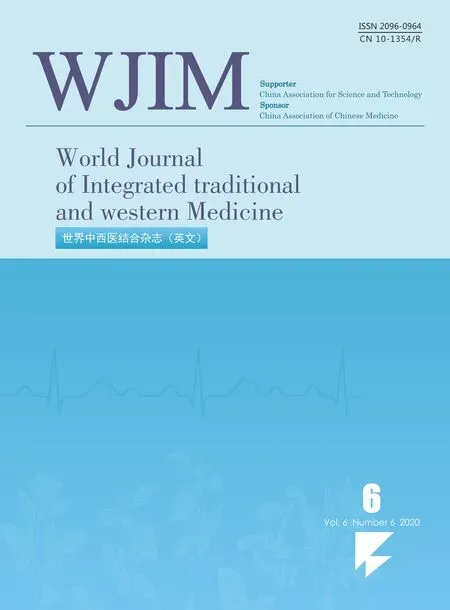 World Journal of Integrated Traditional and Western Medicine2020年6期
World Journal of Integrated Traditional and Western Medicine2020年6期
- World Journal of Integrated Traditional and Western Medicine的其它文章
- The Mechanism of Regulating Leptin Resistance in Obesity and the In fluence of Adjusting Methylation of OB-R,POMC Gene Promoter of Wendan Decoction (温胆汤)
- The Role of Acupuncture Treatment i n Obstructed Defecation Syndrome
- A Patient with End-stage Respiratory Failure Gets Recovery from Mechanical Ventilation by Utilization of Chinese Traditional Medicine
- Status and Development Trend of Evaluation of Post-Marketing Traditional Chinese Medicines in China
- INSTRUCTION FOR AUTHORS
